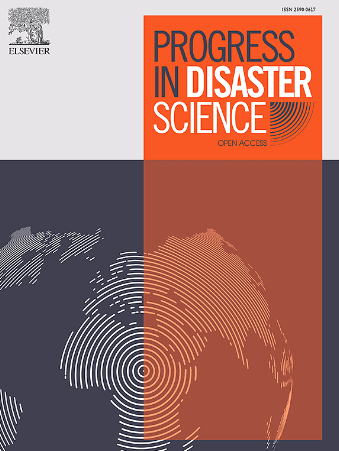Integrating multi-criteria decision analysis and geospatial data for flood susceptibility mapping in Texas, USA
IF 3.8
Q3 ENVIRONMENTAL SCIENCES
引用次数: 0
Abstract
Floods are among the most frequent and destructive natural hazards triggered by snowmelt, intense and prolonged precipitation. This study aimed to delineate flood-prone areas across Texas, USA, by integrating geospatial data with a multi-criteria decision analysis (MCDA) approach. The Analytical Hierarchy Process (AHP) was employed within this framework to evaluate systematically and weight key flood conditioning factors. The factor weights in the AHP were established based on insights from expert evaluations, literature, and feedback from relevant public institutions. Flood susceptibility mapping effectiveness was assessed through the Receiver Operating Characteristic (ROC) curve, focusing on the Area under the Curve (AUC) metric. A multi-criteria weighted overlay method was used to combine various geospatial layers. The flood susceptibility map was validated using historical storm event data from the National Centers for Environmental Information (NCEI), covering the period from 1985 to the present. The final susceptibility map achieved a high AUC score of 0.90, reflecting a robust agreement between the model's predictions and real-world flood events. The most flood-vulnerable basins include the Sulphur, Cypress, Trinity, Neches-Trinity, Sabine, Guadalupe, and Neches basins, which stand out as the most at-risk areas identified in the analysis. The spatial analysis of the flood susceptibility map revealed that approximately 62 % of the study area falls under high flood risk. Thus, priority should be given to implementing targeted flood management and mitigation strategies in the high-risk river basins.
基于多准则决策分析和地理空间数据的美国德克萨斯州洪水易感性制图
洪水是由融雪、强降水和长时间降水引发的最频繁和最具破坏性的自然灾害之一。本研究旨在通过将地理空间数据与多标准决策分析(MCDA)方法相结合,划定美国德克萨斯州的洪水易发地区。在此框架下,采用层次分析法(AHP)对洪水调节因子进行系统评价和加权。AHP中的因子权重是根据专家评价、文献和相关公共机构的反馈建立的。通过受试者工作特征(ROC)曲线评估洪水敏感性制图的有效性,重点关注曲线下面积(AUC)指标。采用多准则加权叠加法对不同地理空间层进行组合。利用美国国家环境信息中心(NCEI) 1985年至今的历史风暴事件数据对洪水敏感性图进行了验证。最终的敏感性图获得了0.90的高AUC得分,反映了模型预测与现实世界洪水事件之间的强大一致性。最易受洪水影响的盆地包括Sulphur、Cypress、Trinity、Neches-Trinity、Sabine、Guadalupe和Neches盆地,这些盆地在分析中被认为是风险最大的地区。洪水易感度空间分析表明,研究区约62%的区域处于高洪水风险区。因此,应优先考虑在高风险流域实施有针对性的洪水管理和减灾战略。
本文章由计算机程序翻译,如有差异,请以英文原文为准。
求助全文
约1分钟内获得全文
求助全文
来源期刊

Progress in Disaster Science
Social Sciences-Safety Research
CiteScore
14.60
自引率
3.20%
发文量
51
审稿时长
12 weeks
期刊介绍:
Progress in Disaster Science is a Gold Open Access journal focusing on integrating research and policy in disaster research, and publishes original research papers and invited viewpoint articles on disaster risk reduction; response; emergency management and recovery.
A key part of the Journal's Publication output will see key experts invited to assess and comment on the current trends in disaster research, as well as highlight key papers.
 求助内容:
求助内容: 应助结果提醒方式:
应助结果提醒方式:


